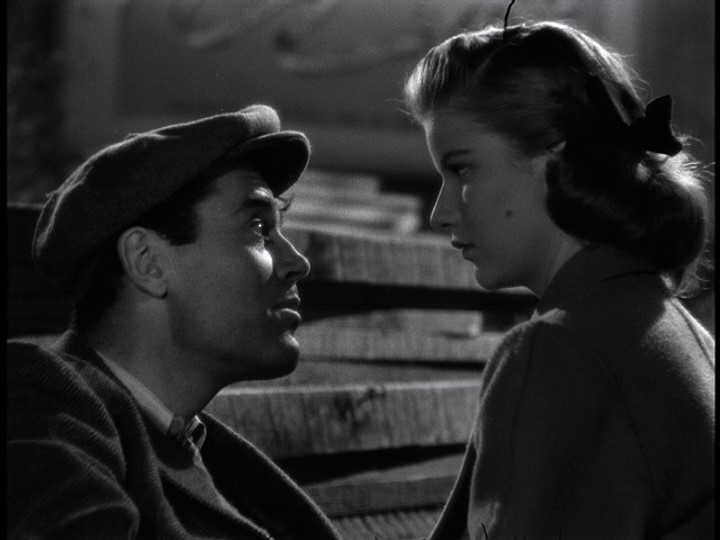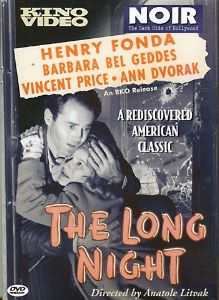
The Long Night (USA, 1947) 101 min B&W DIR: Anatole Litvak. PROD: Anatole Litvak, Raymond Hakim, Robert Hakim. SCR: Jacques Viot, John Wexley. MUSIC: Dimitri Tiomkin. DOP: Sol Polito. CAST: Henry Fonda, Barbara Bel Geddes, Vincent Price, Ann Dvorak, Moroni Olsen, Elisha Cook Jr., Charles McGraw. (RKO Pictures)

1930s French films of the “poetic realism” movement were precursors to American film noir period, in their fatalistic themes, complimented by interestingly moody mise en scene. Some were remade in English. Jean Renoir’s La Chienne (1931) though technically predating the “poetic realism” school, was remade as Fritz Lang’s Scarlet Street (1945), and Marcel Carne’s Le jour se lève (1939) inspired this oddball remake. (Jacques Viot co-wrote the original film.) Henry Fonda gets the Jean Gabin role of a man wanted for murder who is holed up in an apartment, besieged by police outside. While he reflects in this darkened room, we flash back to the circumstances which drew him to murder. Joe Adams became involved with Charlene (Ann Dvorak), who works for a sideshow act by Maximilian, played by Vincent Price! He then meets and falls in love with the virtuous Jo Ann (Barbara Bel Geddes, who always hooks up with obsessive men- see Caught and Vertigo). However, what drives him over the edge is the implied, twisted relationship between her and Maximilian.
Although Fonda has played the role of a man driven to grim circumstances in You Only Live Once, an early precursor to noir, this one slightly falls short of his hard work, because the script is just too nice, especially if you’ve seen the original film. When the mob outside yells up to Adams that they will stick with him to help figure out the situation he is in, the film becomes light years from the authenticity of Try and Get Me, a terrifying film of vigilante justice. This is too bad, because the relationship between Adams and Jo Ann is quite interesting, as he has demons of his own, and she, well, is not the angel he makes her out to be. The scenes in the present are rather striking, thanks to the expressionistic lighting of cinematographer Sol Polito, and the set design by Eugene Lourie, who creates an impressively ominous world. It does recall Carne’s relationship with set designer Alexander Trauner to set a mood.
